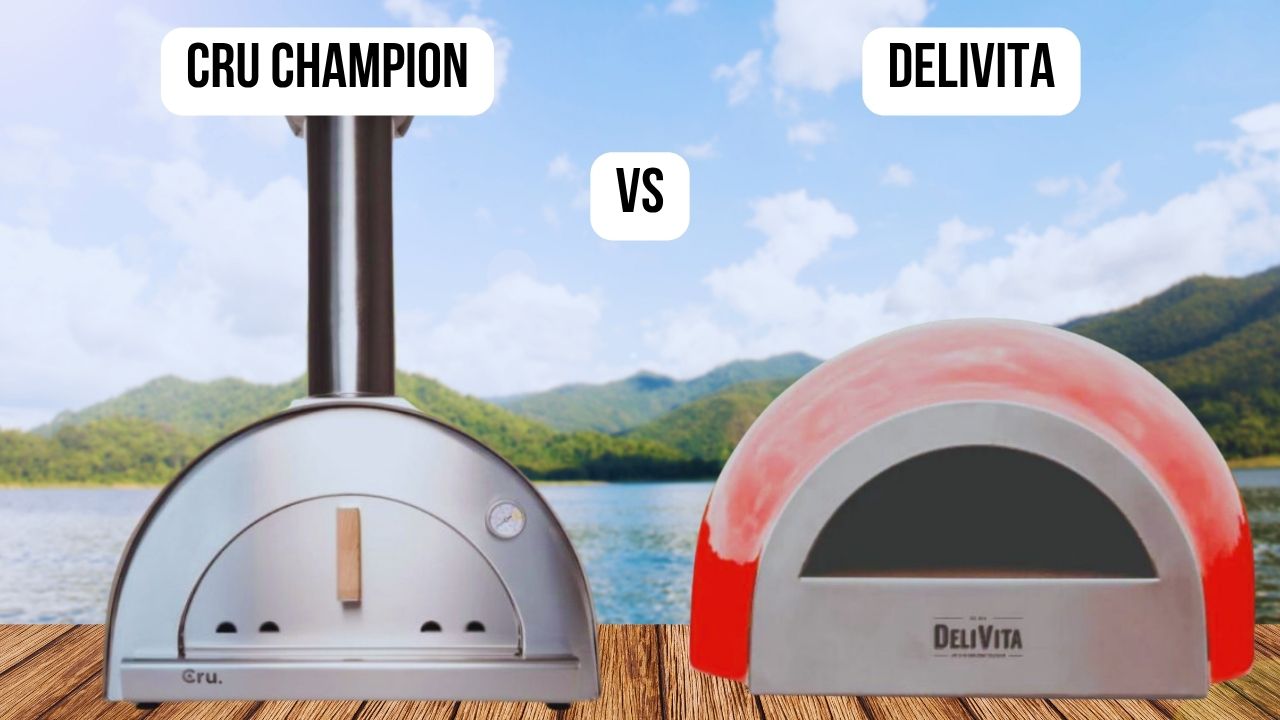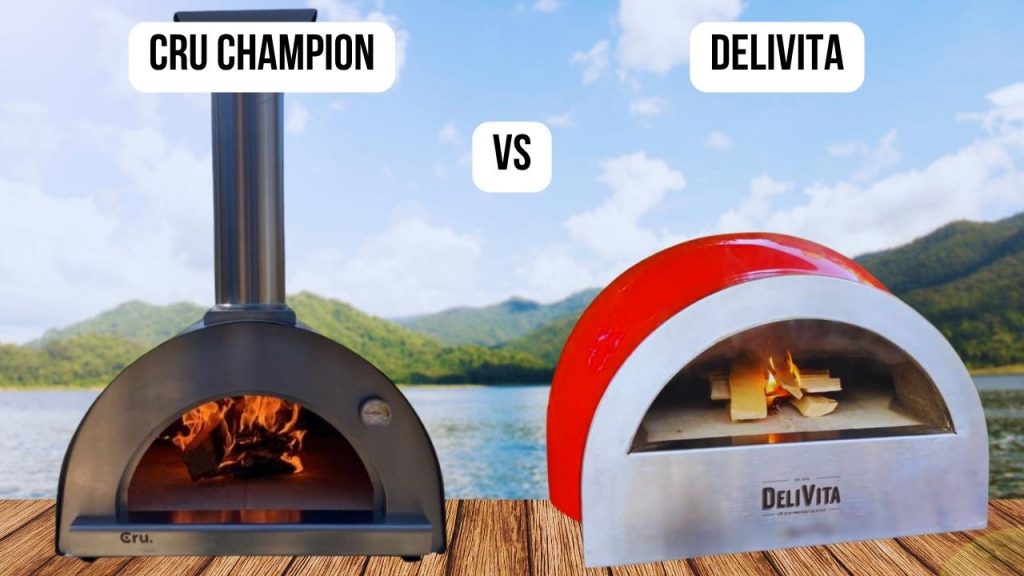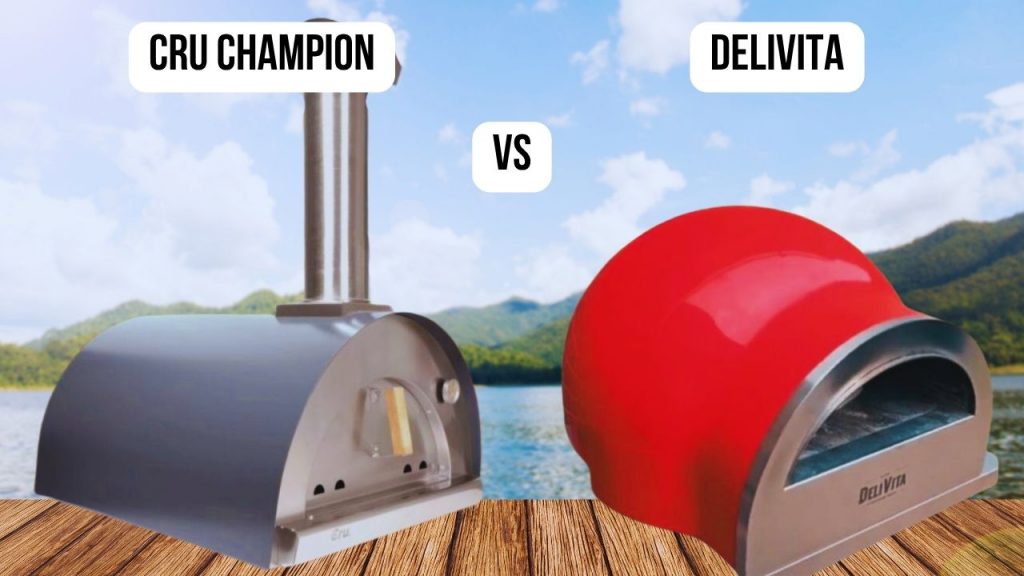As a restaurant chef with over 10 years of experience at my own kitchen, Dequte Restaurant LironBoylston, I’ve had the opportunity to work with a wide range of outdoor pizza ovens in a real kitchen environment. In this article, I’ll be comparing two models I’ve personally used and cooked with: the Cru Champion and the DeliVita. I evaluated both ovens based on the criteria that matter most to serious cooks—quality and materials, temperature control, shape, first-time usage impressions, power source, size, ease of cleaning, and I also conducted a real pizza cooking test to see how long it takes and how the final pizza tastes. If you want to learn more about the exact testing process I use, I also break it down in a separate article.
The Cru Champion is a heavy-duty, wood-fired oven built in Portugal with a massive cooking surface and excellent heat retention—perfect for serious backyard chefs or small events.
The DeliVita is a compact, stylish, and lightweight oven handcrafted in the UK, known for its quick heat-up time and portability while still delivering impressive wood-fired flavor.
In this article, I’ve provided a detailed comparison of the Cru Champion and the DeliVita based on my hands-on tests.
This article contains referral links. If you decide to purchase through them, I may earn a small commission—at no extra cost to you. Your support helps me keep this blog running and continue testing ovens like these.
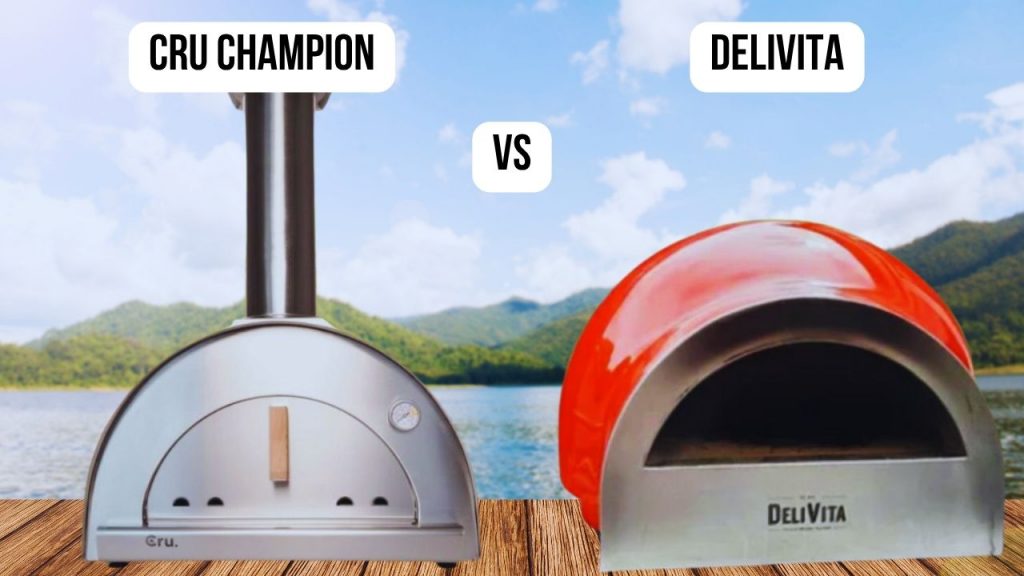
Cru Champion VS DeliVita: Quality and Materials
| The Cru Champion is built with dual-walled AISI 304 stainless steel, thick ceramic insulation, and cordierite stones—designed for long-term, heavy-duty use. Even after multiple sessions, it held up well with only minor discoloration on the chimney. |
The DeliVita is handcrafted in the UK with a fiberglass outer shell, stainless steel, and a clay-lined interior. It’s stylish and weatherproof, but doesn’t match the raw, industrial durability of the Cru Champion.
|
Cru Champion VS DeliVita: Temperature Control
| The Cru Champion reached 850°F in just under 13 minutes in my tests—faster than expected. It holds heat impressively and allows back-to-back cooking without needing constant fire adjustment. |
The DeliVita reaches up to 550°C (1000°F) in about 25 minutes. While powerful, it lacks a built-in thermometer and requires manual fire control and an infrared gun to monitor heat.
|
Cru Champion VS DeliVita: Shape
| The Cru Champion features a large semi-round dome and a 24” x 24” cooking floor, which promotes excellent airflow and even heat. Its spacious interior is ideal for big pizzas, roasts, and multi-dish cooking. |
The DeliVita has a compact, traditional dome shape with a clay interior that circulates heat well. It works efficiently for small pizzas but has more limited airflow and space.
|
Cru Champion VS DeliVita: First-Time Usage Impressions
| The Cru Champion came mostly assembled and took under 10 minutes to set up. Despite its size, the process felt intuitive and professional-grade from the start. |
The DeliVita arrived fully assembled, which was convenient. It felt premium and stylish, but learning to handle the long pizza peel took some practice.
|
Cru Champion VS DeliVita: Power Source
| The Cru Champion runs on both wood and charcoal, offering flexibility for flavor and fuel choice. Wood delivers excellent smoky taste, and charcoal adds cooking control. |
The DeliVita is strictly wood-fired. It produces great flavor, but managing the fire can be labor-intensive, especially when cooking multiple items.
|
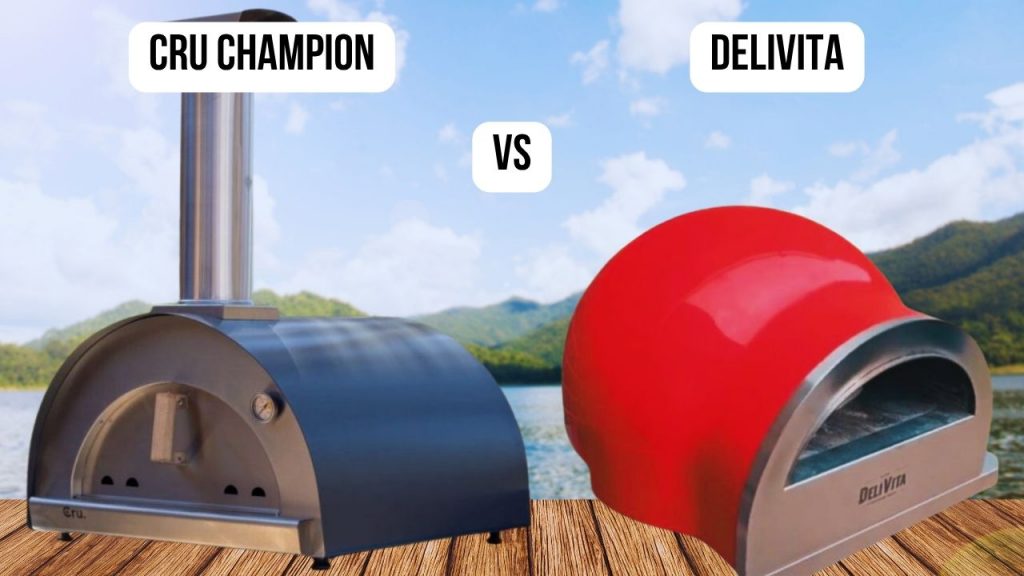 Cru Champion VS DeliVita: Size
Cru Champion VS DeliVita: Size
| The Cru Champion offers a 24” x 24” surface with a 17.5″ opening, allowing for two 10″ pizzas or one 18″ pizza at once. It’s ideal for group cooking, roasting, and entertaining. |
The DeliVita is compact and portable at 66 lbs, but only fits a single 12″ pizza. It’s better suited for small gatherings or solo cooking sessions.
|
Cru Champion VS DeliVita: Ease of Cleaning
| The Cru Champion is easy to maintain. Its removable stone bricks make deep cleaning simple, and ash is easy to brush away once cooled. |
The DeliVita is also straightforward to clean, though it lacks removable components. Its long-handled tools help, but reaching the back can be trickier.
|
Pizza Cooking Test: Cru Champion vs DeliVita
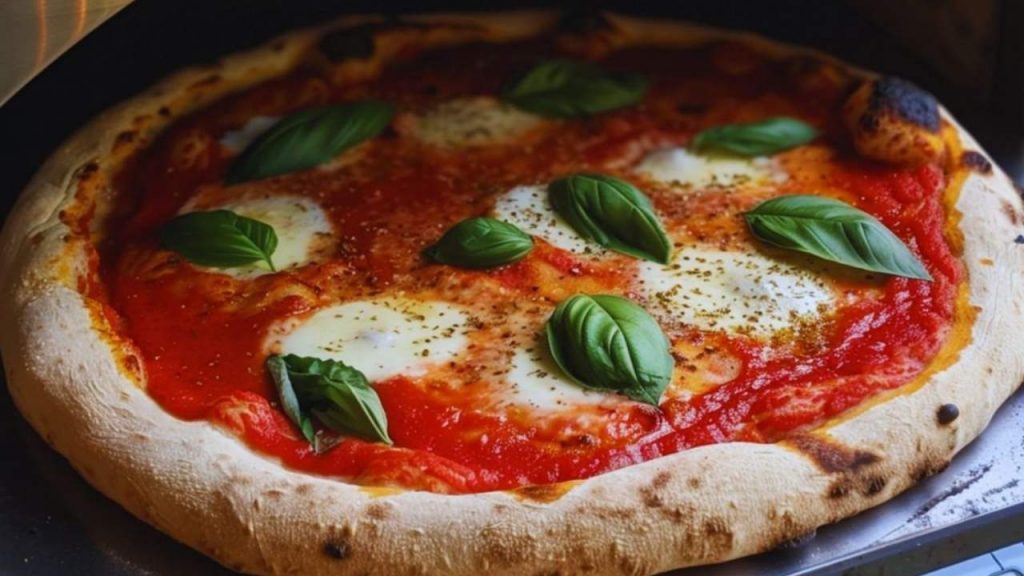
The Cru Champion heated up faster than expected, reaching around 850°F in just under 13 minutes, even though the official specs say 20 minutes. Once it was up to temperature, I cooked a classic Margherita pizza in just 96 seconds. The result was impressive: a crisp, evenly charred crust with that authentic wood-fired chew, bubbling cheese, and a slightly smoky finish that gave the pizza depth. The consistent heat and spacious interior made it easy to cook without fuss or micromanagement.
The DeliVita oven took around 15 minutes to preheat to 500–550°F. I cooked a Margherita pizza in about 2 minutes, rotating it halfway through to avoid burning the edges. The taste was fantastic—crispy on the outside, chewy inside, and full of that classic wood-fired flavor. However, the smaller chamber required more attention to prevent overcooking, and managing multiple pizzas would be difficult without assistance.
In the end, both ovens delivered great flavor, but the Cru Champion made the process feel smoother and more efficient.
How We Tested
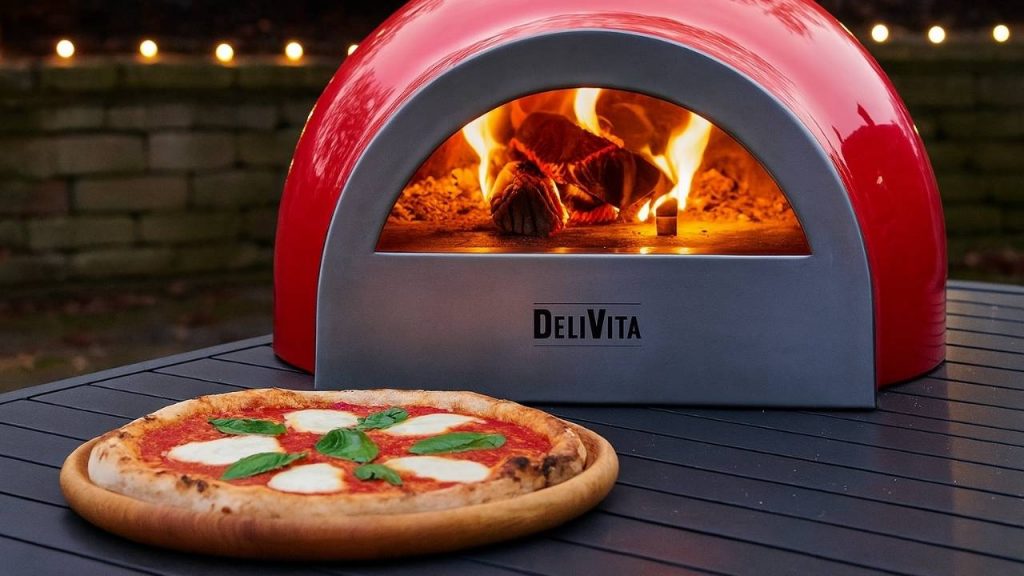
To fairly compare the Cru Champion and DeliVita pizza ovens, I used both multiple times in my outdoor cooking space at Dequte Restaurant LironBoylston. Each oven was tested with the same type of wood, identical Margherita pizza dough, and toppings to ensure a level playing field.
I paid close attention to how quickly each oven preheated, how easy it was to cook a pizza from start to finish, and what the final results looked and tasted like. I evaluated the texture of the crust, the evenness of the cook, and how efficiently each oven handled heat retention between uses. I also took notes on how hands-on each oven felt during use, how easy it was to clean after cooking, and how user-friendly the design was right out of the box.
This hands-on approach let me experience the ovens the way any serious home cook or professional would—relying not on technical specs but on real-world performance.

